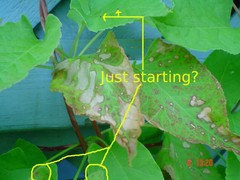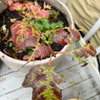Silver Lace Vine problem (pic)
tiffy_z5_6_can
17 years ago
Featured Answer
Comments (15)
tiffy_z5_6_can
17 years agoRelated Professionals
Beachwood Landscape Architects & Landscape Designers · Panama City Landscape Architects & Landscape Designers · Saint Charles Landscape Architects & Landscape Designers · Zion Landscape Architects & Landscape Designers · Allentown Landscape Contractors · Brookfield Landscape Contractors · Doctor Phillips Landscape Contractors · Essex Landscape Contractors · Fort Payne Landscape Contractors · Hurricane Landscape Contractors · National City Landscape Contractors · North Highlands Landscape Contractors · Rockland Landscape Contractors · Uxbridge Landscape Contractors · Wayland Landscape Contractorsjean001
17 years agocramapple
17 years agojean001
17 years agocramapple
17 years agocramapple
17 years agocramapple
17 years agojean001
17 years agocramapple
17 years agotiffy_z5_6_can
17 years agojean001
17 years agojean001
17 years agocramapple
17 years agocalliope
17 years ago
Related Stories

LANDSCAPE DESIGNSee 5 Unexpected Ways to Use Vines
Vines can grow over slopes, trail off pergolas and add seasonal color to the garden
Full Story
KITCHEN STYLESNew Southern Style for the Kitchen
Gracious tradition is alive and well, bless its heart, but Southern kitchens are welcoming in modern updates too
Full Story
GROUND COVERSGround Force: 10 Top Ground Covers for Your Garden
Protect your soil from weeds and drought this summer with a living mulch of ground covers
Full Story
ECLECTIC STYLE5 Reasons to Hit That Secondhand Store
New things have their place, but old things have a history and beauty all their own
Full Story
LANDSCAPE DESIGNBoxwood Alternatives Bring the Chelsea Flower Show to You
Don’t let box blight limit your plans to borrow garden design ideas from the renowned British event
Full Story
BATHROOM DESIGNRoom of the Day: Luxe Hotel Look for an All-White Master Bath
A ‘beauty bar,’ marble-lined steam shower and laundry chute are a few of the amenities in this glamorous spa bathroom
Full Story
GARDENING GUIDESGrow Your Own Privacy: How to Screen With Plants and Trees
Use living walls to lower your home and garden's exposure while boosting natural beauty in your landscape
Full Story
HOLIDAYSHouzz Call: Show Us Your Holiday Mantel
Do reindeer prance or lights dance above your fireplace during the holidays? Share your decorated mantel with us
Full Story
HOLIDAYSChristmas Tree Decorating the Painless Way
Holidays are for carols, not cussing. Make tree trimming less work and more fun with this guide at your side
Full Story
HOUSEKEEPINGWhat's That Sound? 9 Home Noises and How to Fix Them
Bumps and thumps might be driving you crazy, but they also might mean big trouble. We give you the lowdown and which pro to call for help
Full Story








jean001